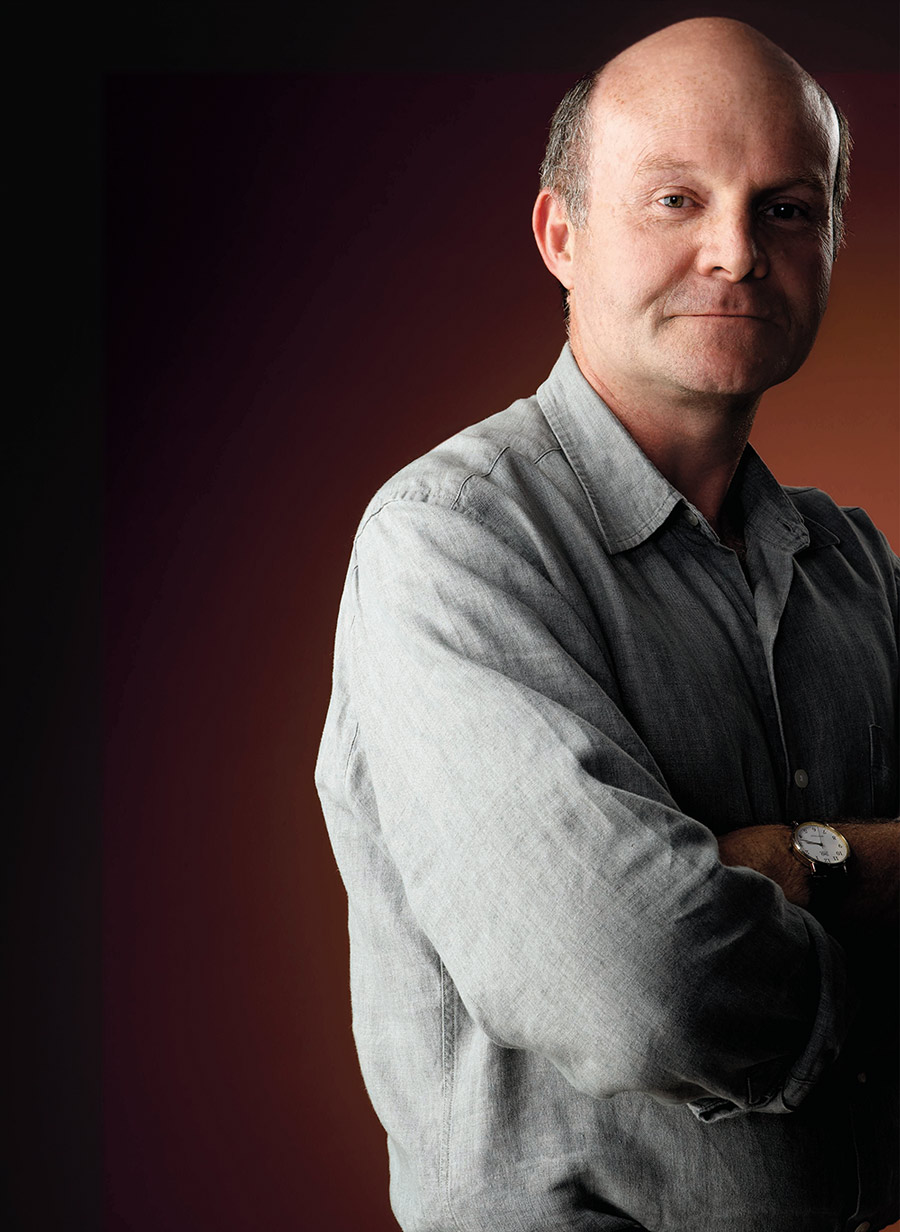

Staying Alive
A writer rides the wave of targeted cancer therapies for more than nine years. But should luck play such an important role?
By Graham Adams
In 2015, when it was becoming very clear I needed urgent treatment for an aggressive form of chronic lymphocytic leukaemia, a doctor — from a culture more forthright than New Zealand’s — ushered me into his surgery with a brutal welcome: “I’ve just read your oncologist’s report. It makes for pretty grim reading, doesn’t it?”
I didn’t get to read the report, nor did I want to, but I already knew my prognosis was extremely poor. A few months earlier, my first bone marrow biopsy had revealed I had a genomic aberration that was then sometimes referred to as the “dreaded 17p deletion” (defined as “the loss of all or part of the short arm of chromosome 17”). It meant the usual chemotherapy drugs relied on to treat chronic lymphocytic leukaemia (CLL) had only a very small chance of working. Haematologists — in New Zealand at least — had close to nothing in their arsenal to treat patients like me.
The haematologist who gave me the news looked at me gravely: “You do know what 17p deletion means, don’t you?”
I replied: “Yes, it’s the feature no one wants. There’s no treatment that will work.”
Faced with an effective death sentence, my only real hope was to somehow find $126,000 for a year’s supply of a cutting-edge drug called ibrutinib that might reduce my lymphocyte count sufficiently to make a stem-cell transplant possible.
CLL is the most common leukaemia in adults. It is a condition in which lymphocytes — a type of white blood cell tasked to defend the body against infection — become cancerous in the bone marrow, and crowd out red blood cells, platelets and other white blood cells. By the time I needed treatment in mid-2015, they had proliferated so enthusiastically my blood counts were completely out of whack. The lymph nodes on both sides of my neck had swelled so much I looked like a chipmunk. One enlarged node at the back of my head was so eye-wateringly painful for a time I couldn’t get to sleep without the help of Tramadol and a sleeping tablet.
I had drenching night sweats, debilitating fatigue and had to take powerful antibiotics every four or five weeks to ward off recurrent infections. In fact, a lung infection and a blood clot in my thigh, alarmingly close to a deep-vein junction, had put me in hospital in Melbourne in late 2014.
It was an unusual holiday experience, to say the least, given I was admitted to St Vincent’s Hospital’s emergency ward just three hours after I had arrived in the city with my partner for what was intended to be a five-day break. I was discharged eight days later, just well enough to fly home.
Somehow, miraculously, I’m still alive, mostly due to the work of highly dedicated and imaginative haematologists — and an enormous amount of good luck that allowed me to ride the wave of new drugs that in 2015 still only had laboratory classifications: BGB-3111 and ABT-199 (now known as zanubrutinib and venetoclax respectively).
Both are revolutionary, not least because they are targeted, more effective and far less brutal than conventional chemotherapy, with fewer side effects. They also largely overlook poor genomic markers such as 17p deletion.
This explosion in knowledge has been my most significant and enduring piece of good luck — that is, to have been diagnosed with CLL during an extraordinary period in the world’s medical history. Targeted therapies, which inhibit pathways vital to tumour growth, and immunotherapy treatments that help the immune system to attack them have revolutionised cancer treatment.
And through remarkable twists of fortune, I have been able to take advantage of that revolution — which has been compared to the advent of antibiotics a century ago — by getting access to some of these ground-breaking drugs.
Not long after my consultation with the very forthright doctor, the results of a blood test were sent accidentally (and with no small measure of serendipity) to the wrong haematologist. Dr David Simpson, at Auckland’s North Shore Hospital, happened to be recruiting patients for a six-month trial and contacted me to check if I might be interested.
“Clinical trial” are the magic words cancer patients long to hear — although waiting to find out the results from the welter of tests that determine whether you will be accepted is nerve racking. In my case, it meant a CT scan, electrocardiogram, blood tests, bone marrow biopsy, and the last-minute excision of a lymph node under general anaesthetic to check I didn’t have evidence of the often-deadly and much-feared Richter’s transformation.
The tendency of pharmaceutical companies running clinical trials to screen out those whose advanced disease and comorbidities may compromise the results means they are sometimes criticised for not including a representative section of the patient population who need treating. Fortunately for me, I escaped the net. The tests failed to detect I had three badly blocked arteries, which led to a heart attack on my third day of treatment, but by then I was irrevocably part of the programme.
